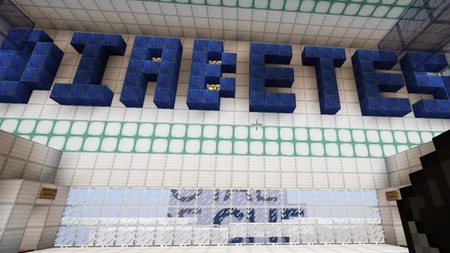The hugely popular virtual construction game Minecraft is being used to teach young people about diabetes by researchers from the University of Aberdeen.
The project is a collaboration with the Universities of Aberdeen, West of England, Hull and Lancaster, the Science Communication Unit, Royal Society of Chemistry and Science Hunters.
The team have built a human body in Minecraft, which users can move around to explore the organs, cells and molecules inside it.
The Minecraft digital model also allows users to visualise and learn about processes that occur when someone does or does not have diabetes.
During the 2019-2020 school year, the team began using the specially constructed Minecraft human body to deliver sessions about diabetes in schools in England and Scotland.
The pandemic put a halt to face-to-face teaching sessions but now the team have recorded a virtual tour of the Minecraft model so students and anyone who is interested can explore diabetes – even if they don’t have Minecraft at home.
The slideshow and video explore the relevant parts and processes involved in diabetes - explaining what it’s like to have diabetes, and how it’s treated. It also explores the pancreas, blood vessels, cells and molecules to learn about their roles in diabetes.
The slideshow resource even offers a creative challenge including building with Minecraft and Lego.
Dr John Barrow, a Senior Lecturer in Molecular Biology and Dean for Employability and Entrepreneurship at the University of Aberdeen, said: “The inside of the human body, and all its organs, cells and molecules can be tricky to visualise, and that makes it difficult to understand how conditions like diabetes work.
“We can use things like models and diagrams to help us understand processes in the human body but models are expensive and not common place, while diagrams lack the ability to be immersive and interactive.
“The virtual construction game Minecraft, on the other hand, is great for exploring scientific concepts because it has many features and processes that relate to the real world, and can be used to visualise things that we can’t usually see – such as cells and molecules in the human body.
“Children and young people are often familiar with the game as it’s hugely popular, and this can give them a sense of expertise and ownership. We know Minecraft can act as a hook for children to engage with science topics, and that by participating in our sessions they can increase their subject knowledge and understanding, making it an effective tool for both catching children’s interest, and supporting their learning.”


